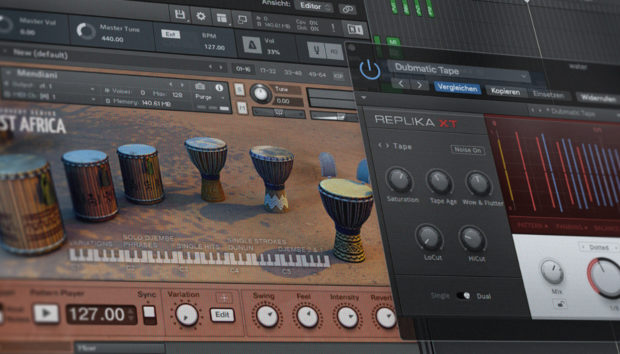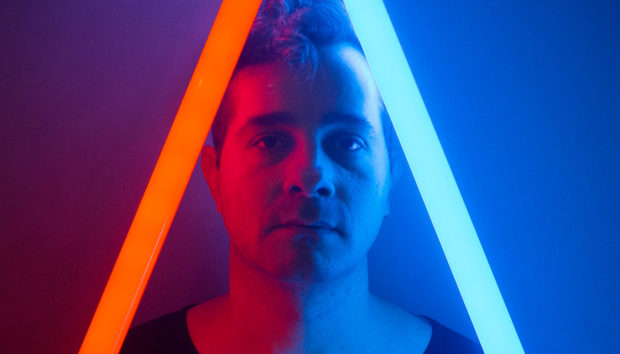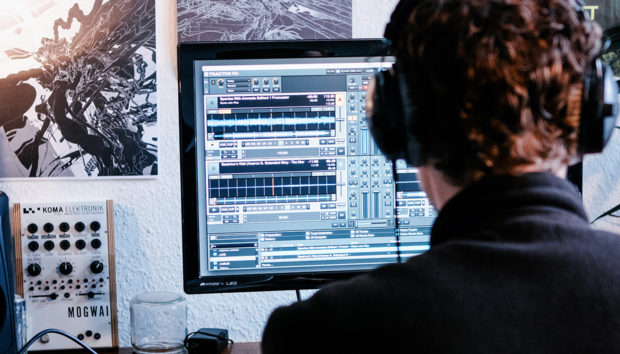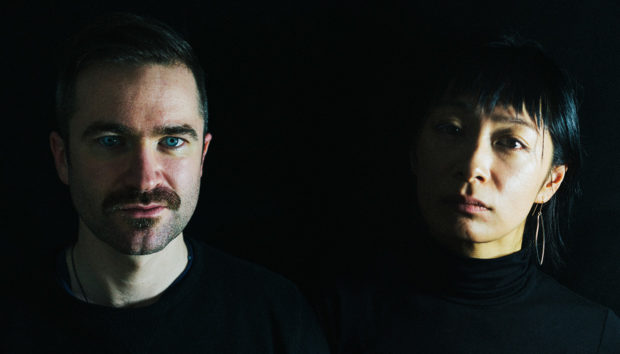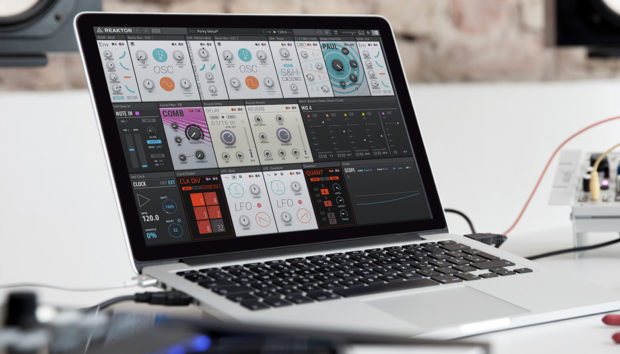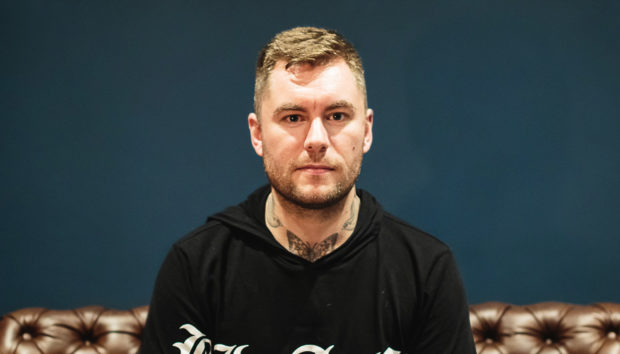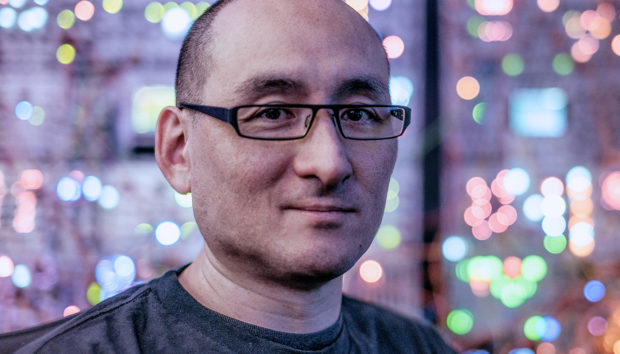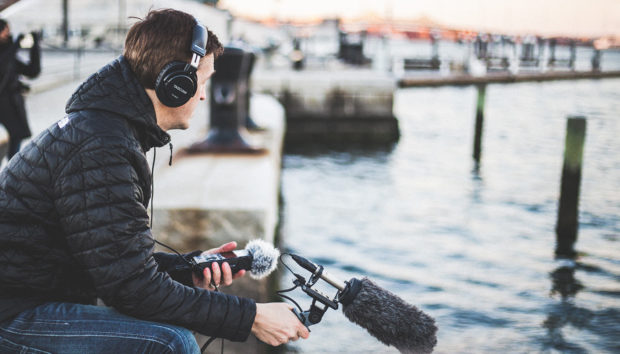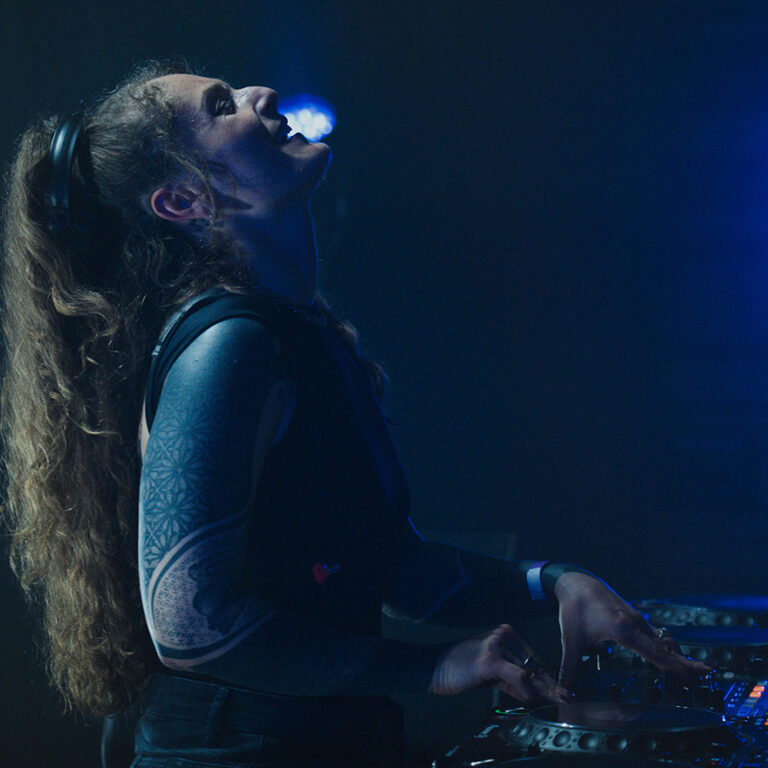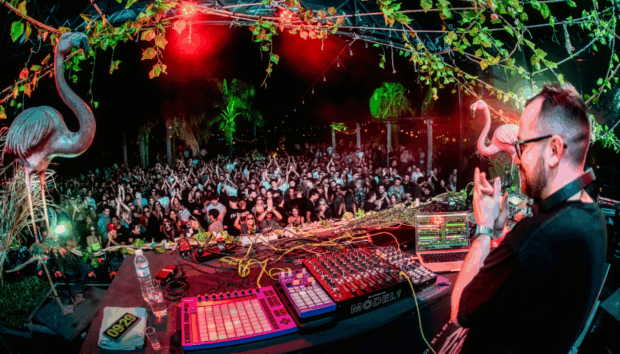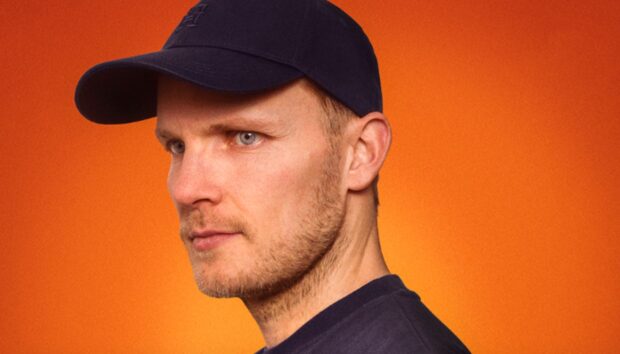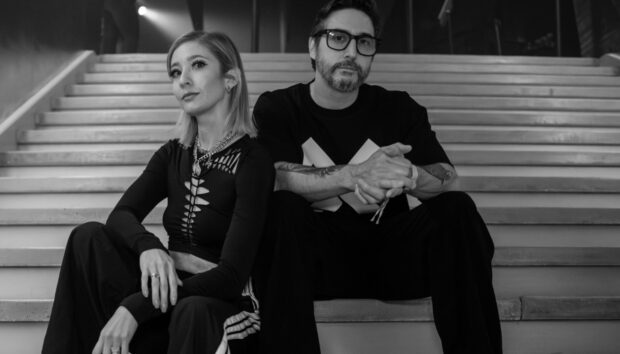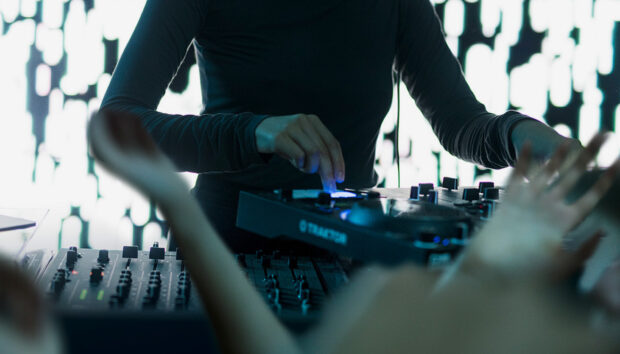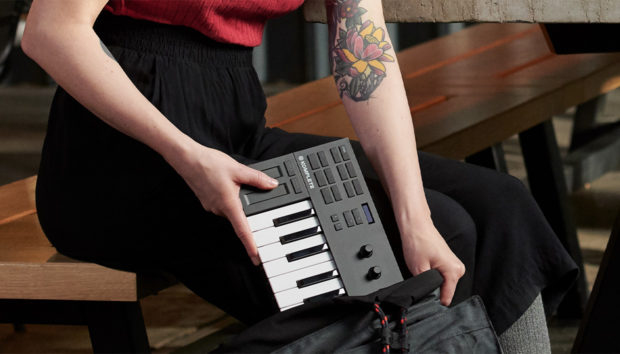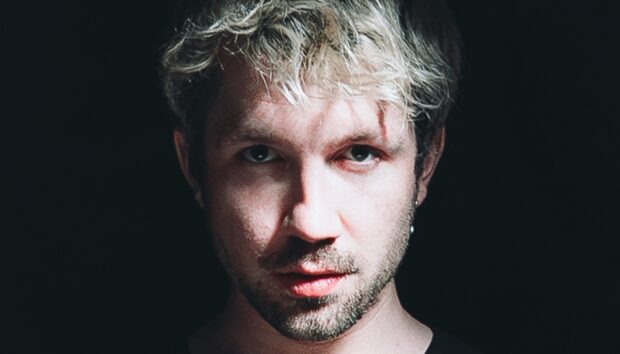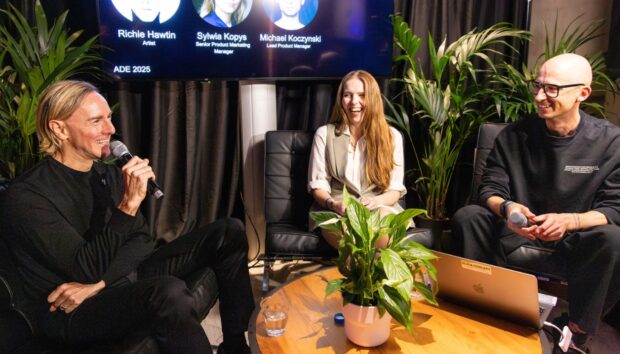Marion Di Napoli’s approach to music production is grounded in feeling. As a classically trained pianist turned electronic producer, she’s spent the past few years developing a sound that blends emotive progressions with raw, rhythmic energy. Her latest release, Fade Away, out now on Charlotte de Witte’s label, showcases that progression in an old, vocal-driven track that merges club instincts with a deeper connectivity.
At the heart of her workflow is the Maschine Mikro.
For Marion, it’s not about chasing precision or locking into a rigid template. It’s about having a tool that lets her stay close to the moment, responding physically to what she’s hearing. That hands-on dynamic plays a huge role in how her tracks come together, often starting with instinctive sketches before being refined into full arrangements.
In this interview, Marion shares how the Mikro helps her write with more intuition, how she overcomes perfectionism in the studio, and why she’s learning to value imperfection as part of the creative process.
Jump to these sections:
- Why spontaneity is central to her creative process
- How Maschine Mikro supports emotionally driven composition
- The link between rhythm, expression, and physical control
- Balancing minimalism with vulnerability
- How to stay grounded through imperfection and experimentation
Here’s how Marion uses gear, instinct, and emotion to shape her distinctive sound.
When you’re writing something as emotionally charged as Fade Away, how important is it to get ideas down quickly before you overthink them?
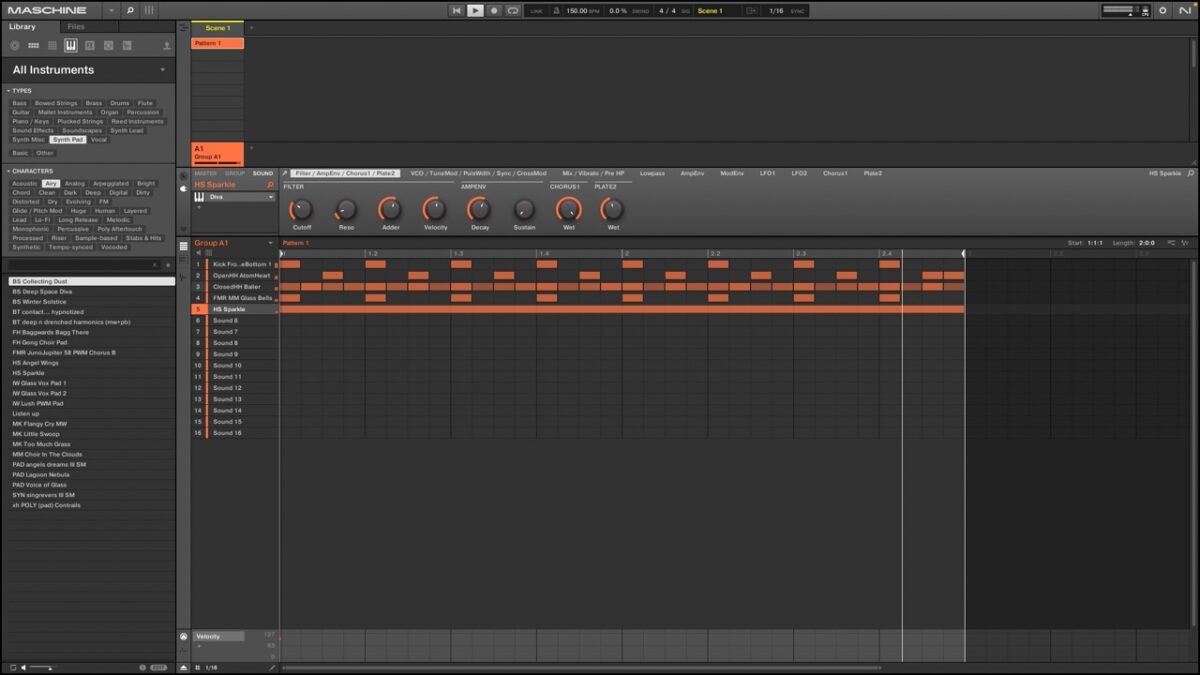
For me, creativity is all about spontaneity. The more time I spend on a track, the more I feel like I lose touch with its essence, its original DNA. When I first started producing about six years ago, I would spend weeks, even months, perfecting a single piece. I’d obsess over every little detail, constantly tweaking things to try and get them just right. But over time, I realized that chasing perfection often strips the music of its raw emotion. Perfection can actually work against authenticity. Trying to make something flawless can take you further away from the vibe that made the idea exciting in the first place.
That shift in mindset led me to start working with a MIDI controller: the Maschine Mikro. When an idea pops into my head, I want to capture it right away. Having something tactile and intuitive lets me dive into the creative process without overthinking it. I can lay down a loop and instantly start adding layers by tapping on the pads. Patterns and ideas just start to flow naturally from there.
Once I’ve sketched out the idea, I’ll move to the computer to structure things more precisely with the keyboard and mouse. But that first phase – the sketch, the rough draft – is always spontaneous. That’s what keeps the music alive.
Pro tip from Marion Di Napoli: Don’t be afraid to get creative, let loose, and jam alone with the Maschine Micro without expecting any specific outcome. That’s where all the fun happens.
What does the physical act of tapping out rhythms or triggering vocal cuts on the Maschine Mikro do for your creative flow compared to using a mouse or keyboard?
The biggest difference I feel is really in the rhythm. When you’re working with a mouse and keyboard, everything tends to be a lot more mechanical. In terms of tone and overall sound, I can still get by without the Maschine Mikro, but when it comes to rhythm, it’s a whole different experience. It just feels more spontaneous, more real. One major advantage is the velocity-sensitive pads.
That’s where I can really add tension and dynamics to a pattern, whether it’s through vocal chops or percussive elements. It brings a level of expression that’s hard to replicate otherwise.
Pro tip from Marion Di Napoli Napoli: You can use any element for finger drumming: vocals, drums, bits of textures. Creativity has no limits.
When you first start a session, are you usually chasing a rhythm, a vocal idea, or a texture? How does the Mikro help you catch it?
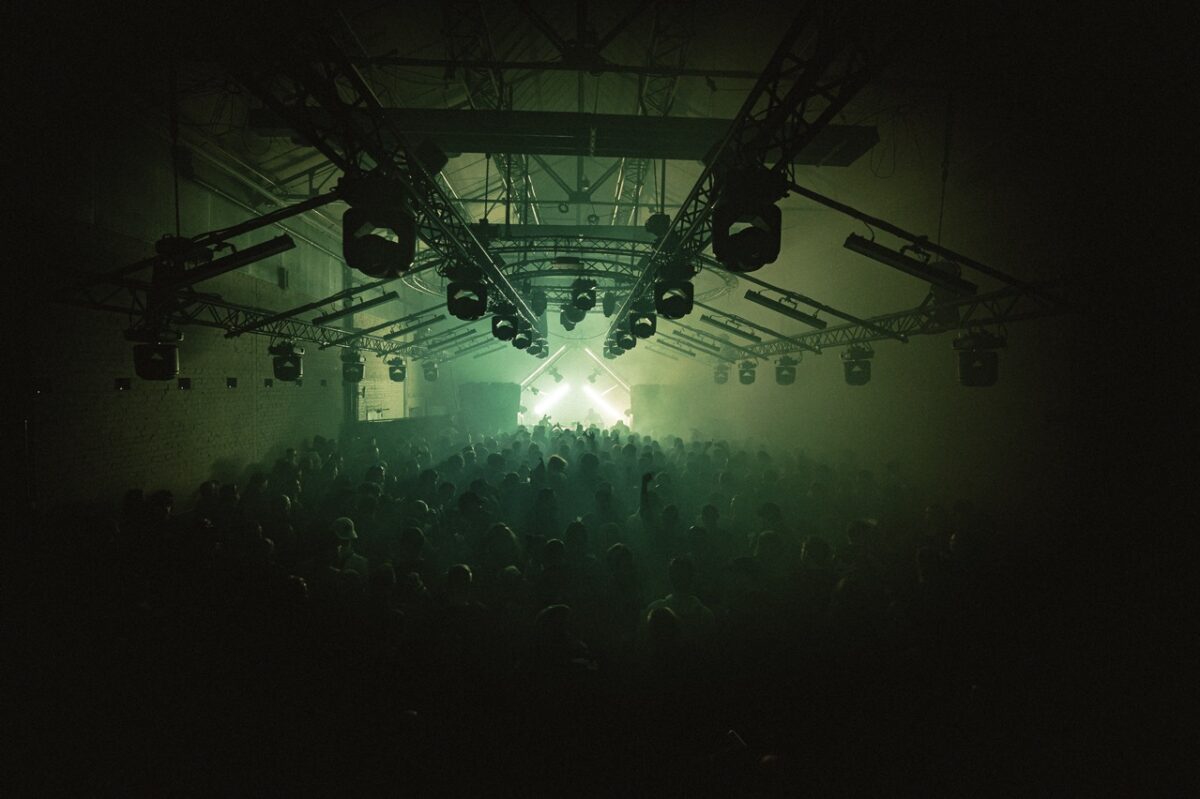
It really depends. I never stick to one creative process. I like to explore, try new things, and let ideas lead the way, whether I’m working with a machine or playing piano, guitar, or other instruments.
When I use the Mikro, sometimes I already have a very clear idea in mind because I’ve started the track beforehand. Other times, I’m starting with a completely blank canvas, and that’s when I’ll lay down a texture, a vocal, or maybe a synth. In those moments, I really let my emotions guide me and lean into the intuitive, interactive side of the gear.
Sometimes it leads to something great, sometimes it doesn’t go anywhere. But I often allow myself to just jam, with no pressure or specific outcome in mind. I give myself the space to explore, to test, to experiment… and honestly, that’s often when the best ideas start to take shape!
Pro tip from Marion Di Napoli: Play first, organize later. Often, having a project too neatly planned in your head can be counterintuitive. Just play, then focus on organizing your patterns afterward.
How do you avoid second-guessing a good idea when it’s still raw? Does working with your hands help keep you committed?
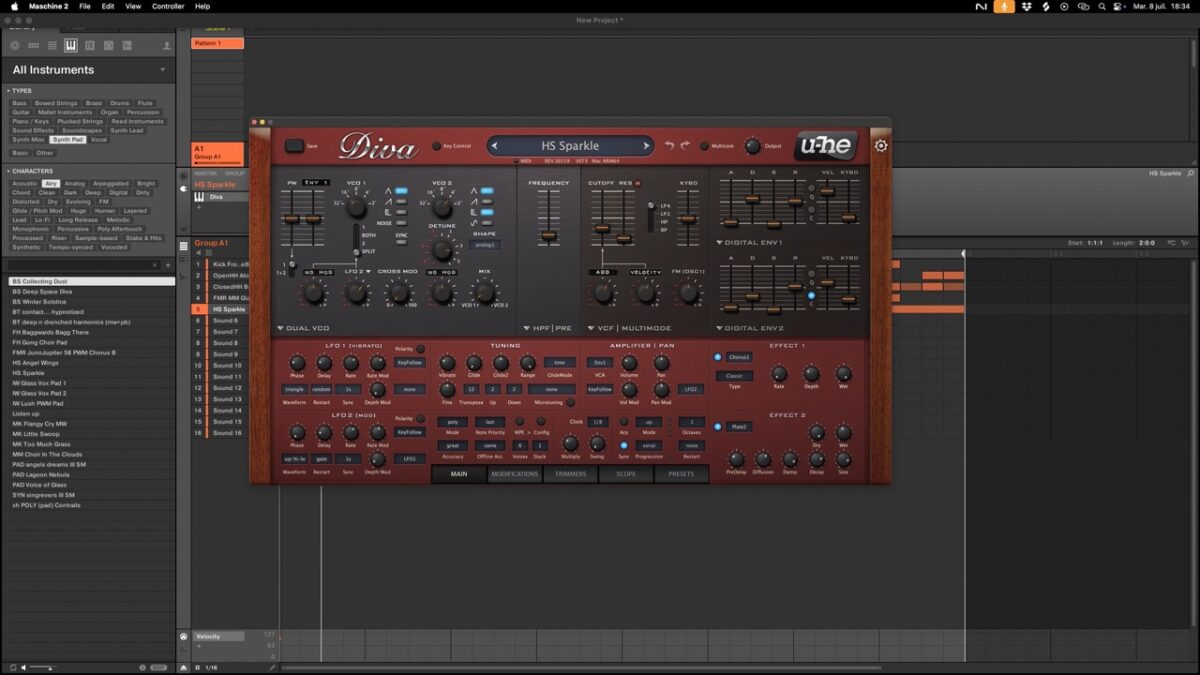
One of the strengths of working with machines, but also sometimes a challenge, is how fast and spontaneous everything can be. There’s no space for overthinking in the moment; you just follow your creativity and keep layering ideas. I love that part of the process because, for me, it’s entirely emotion-driven. I don’t overanalyze, I just do what feels right in the moment. It’s pure creativity.
I’m someone who’s naturally very inspired, so ideas tend to come to me quickly. But once I’ve gone through that initial phase with the Mikro, where I’ve built up patterns and stacked different elements, I need to step back and filter. I can’t just leave everything in there.
I actually like my productions to be quite minimal, meaning that I want each sound to really have its place and fill the space intentionally. I often work with a kind of call-and-response dynamic between elements, rather than layering too many things that compete with each other.
Once I’ve laid everything out, that’s when the real work of selection begins. Deciding what stays, what works together, and what doesn’t. And honestly, that’s one of the hardest parts. Sometimes you love everything you’ve made, so choosing what to cut can be tough.
As for working with my hands, it actually makes the creative flow even more intense. It sparks a lot of spontaneous ideas. Then it’s up to me to decide which ones truly serve the track. The rest, I either let go of or save for a future project.
Pro tip from Marion Di Napoli: Make mistakes. The advantage of using a controller is that you can always go back and fix things. Missing the beat and hitting the wrong note is okay. Keep playing, you can always adjust later.
Can you talk about how you balance emotional vulnerability with technical precision in your workflow?
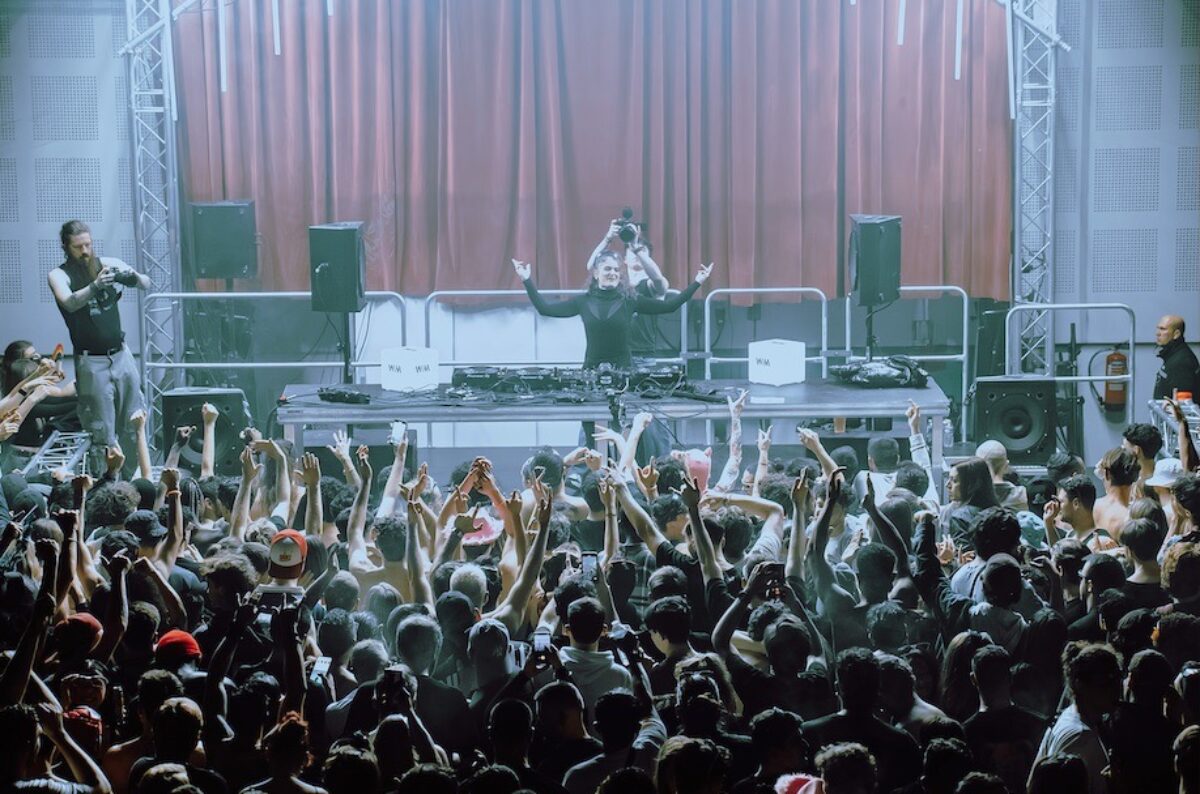
I really believe everything comes down to balance. For me, emotion and vulnerability in a track stand almost in contrast to technical precision. When you get into the technical side, you’re stepping outside the creative moment, and it’s more about making the listening experience smooth and enjoyable.
To me, a great track needs both: the emotional core, the soul of the piece, and just the right amount of technical polish. In techno, for example, many of the most impactful tracks aren’t necessarily the most technically refined. They resonate because they feel something. People listen to music for its soul, for the way it makes them feel, for the journey it takes them on, the memories it brings back, and the emotion it stirs.
Out of all the people who will hear a track, maybe only 1% are producers or professionals who can appreciate the technical intricacies. The rest are there for the emotional connection.
If we focus too much on perfecting the technical side, we risk losing the soul, the identity of the track. But on the flip side, if a track has an incredible emotional core but is poorly produced and unpleasant to listen to, it won’t connect either.
So for me, it’s about finding that sweet spot: staying true to the essence of the track while giving it just enough technical attention to make it flow and sound good, without overworking it and diluting its original energy.
Pro tip from Marion Di Napoli: Be innovative: do things you’ve never seen or tried before.
What would you tell a newer artist who’s trying to find their voice; especially one who might be afraid of making imperfect things early on?
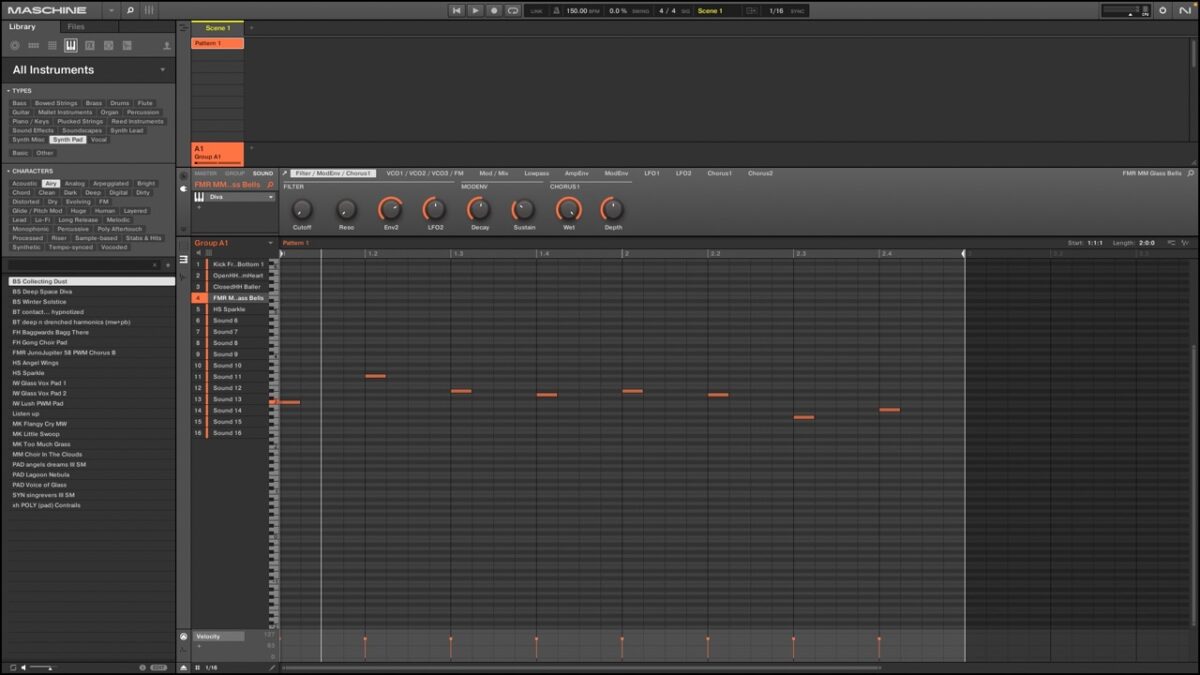
I would tell them, without hesitation, not to be afraid of stepping off the beaten path, to avoid boxing themselves in or trying to create something that already exists. If you want people to listen to your music, you need to offer something fresh and unique.
Finding your own sound isn’t always easy. But you have to keep experimenting, keep exploring, and most importantly, don’t be afraid to break the rules. I truly believe that imperfection is what makes art beautiful. It’s often in those raw, imperfect moments that the most powerful ideas are born.
Creativity – the soul of music – isn’t something you can learn from a manual. It’s something you live, something you feel. Whether you’re using machines, instruments, or a computer only: you’ve got to let your creativity lead the way.
As for the technical side, that comes with time and experience. Your ear gets sharper, you start to analyze what you’re listening to, and you constantly revisit your own tracks. All of that takes patience, a lot of practice… and most of all, passion.
Wrapping it all up
Thanks to Marion Di Napoli for opening up about her process and the way she balances emotion and intuition with intention and precision. Her work with the Maschine Mikro reflects a broader ethos in her music: follow the moment, shape what feels real, and let your hands lead the way before your mind gets in the way. You can hear that spirit loud and clear in Fade Away, out now via RPM.
If you haven’t yet explored the tactile world of Maschine, Marion’s workflow is a good reminder of what happens when you stop overthinking and start feeling your way into the track.
